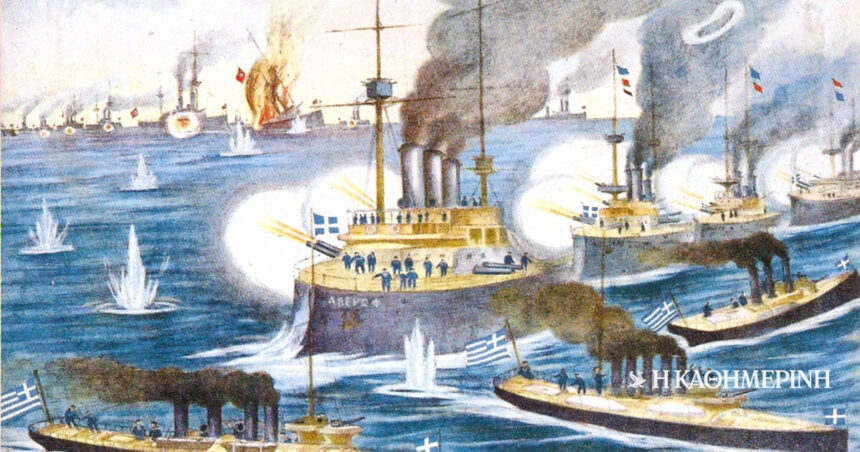A decisive role in the victory of Greece in the Balkan Wars played her Royal Navy. At the dawn of the 20th century, the renewal of the fleet was deemed imperative if Greece wanted to play a role in the Aegean. She had only a small force of torpedo boats and three battleships, which had been built in Francein the late 1880s. In 1908-1909, orders for eight destroyers were placed by the United Kingdom and the Germany. The legendary armored cruiser “Georgios Averof” was to be added to them.
The cruiser “Georgios Averof” sailed into the port of Piraeus at the beginning of September 1911 and immediately joined the Greek fleet. This was followed by many months of training at sea, in order to acquaint his crew with the conditions of a war. The arrivals of new warships as well as the better training of sailors in the new tactics of war they raised the prestige of the navy in the eyes of the allied Balkan states. On the eve of the outbreak of the Balkan Wars, Greece’s allies counted on the action of the Greek navy against the Ottoman fleet in the Aegean.
At noon on October 5, the day Greece declared war on the Ottoman Empire, the “Averof”, the flagship of the Greek fleet, under Rear Admiral Pavlos Kountouriotis, sailed from Piraeus heading northeast. Initially, the Greek fleet liberated her Lakeselecting as mooring base in the bay of Moudros.
On December 3, the first major naval battle took place between the Greek and Ottoman forces.
This was followed on October 18 by the torpedoing of the Ottoman battleship “Fethi Bulent” in the port of Thessaloniki by Nikolaos Votsis and then the liberation of a series of islands and coastal regions of Macedonia. On December 3, the first major naval battle took place between the Greek and Ottoman forces off Cape Hell. The Greek fleet managed to block the exit of the Ottoman ships from the Hellespont, achieving a victory with great psychological significance.
In December, the Ottoman fleet tried three more times to enter the Aegean without success. On January 2, the Ottoman cruiser “Hamidiye” left the Straits at night. The Greek warships patrolling the area were unable to distinguish it due to the thick fog that had fallen that night. Without encountering any obstacle, the Ottoman ship sailed to Syros, where it attacked the coal depots, the power station and the docked ocean liner “Macedonia”. The ship then headed for the coast of Asia Minor.
Kountouriotis kept his cool, despite the pressure he received from Athens to pursue “Hamidie” immediately. Although he sent a light squadron against him to the coasts of Asia Minor, he kept the main units of the Greek fleet near the Hellespont, seeing that the whole enterprise was a distraction on behalf of the Ottomans in order to get their fleet out of the Straits. His assessment was confirmed a few days later.
When the Ottoman ships came within firing range, the Greek ships opened fire on them.
On January 5, 1913, the Ottoman fleet headed for Lemnos, an island of strategic importance for controlling the Straits. The Ottoman armada consisted of one cruiser, four battleships and thirteen destroyers and torpedo boats. When the Ottoman ships came within firing distance, the Greek ships opened fire on them. The naval battle lasted almost three hours, but from almost the first moment the superiority of the Greek forces was evident. The “Averof” pursued the Ottoman fleet to the entrance of the Straits, coming within firing range of the Ottoman artillery.
It was a huge victory for the Greek naval forces. The Ottoman fleet was routed, with its ships having suffered serious damage, in contrast to the Greek, of which only the “Averof” suffered some minor damage. The announcement of the victory in the naval battle of Lemnos was received with enthusiasm by the Greek people. The Ottoman fleet sought no further adventures in the Aegean during the Balkan Wars.
Column editor: Myrto Katsigera, Vassilis Minakakis, Antigoni-Despina Poimenidou, Athanasios Syroplakis




